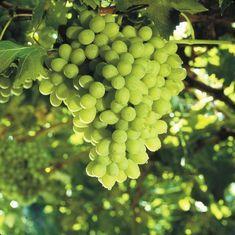
Murcia, in the Spanish south-east, is Spain’s key grape-growing region.
A major source for the UK, its product portfolio is well-aligned to the requirements of retailers and consumers and it is generally acknowledged as the preferred source for the main summer period. However, these are difficult times for growers with tough external competition and price pressure, but they are determined not to lose their place in external markets and so are turning attention to research and development.
And now a group of producers in Murcia is working together to address the future needs of their industry. The group of 18 grape exporters have come together under the banner of the Investigación y Tecnología de Uva de Mesa (ITUM) project. The project has been in operation for just over two years and already its founding members are getting ready to welcome newcomers on board.
“We are in talks with existing members because there has been a lot of interest from other grower-exporters wishing to join,” says Juan Carreño Espín, the lead researcher on the project. “The existing members are just carrying out economic studies of the applicants in order to determine whether or not they can join.”
One of those members is El Ciruelo. A family-owned business, it produces 16 seeded and seedless types, from June to January, and this season production has reached some 15,000 tonnes. “There are about 350ha of grapes on our own farms making up part of our total 1,000ha of own-production of grapes, stone fruit and lemons,” says Rupert Maude commercial director at the group. “Grapes are the largest part of the business and have required continuous and substantial on-going investment.”
Grape sales to the UK are hugely important to the group, accounting for 30 per cent of total sales of the fruit. Germany also takes a similar share of the crop with Spain on 20 per cent and other countries such as France and Portugal sharing the remainder.
Maude believes Spain has reached its dominant position in summer grape supplies to the UK thanks to its “weather, people, know-how and will to succeed” as well as development in production of good quality early seedless varieties such as Sugraone and Crimson. But it faces challenges from outside as well as from within. “North Africa is and will become more of a threat as the region develops further,” says Maude. “We will also have to see what happens with the newest members of the EU and also the capacity to compete with others on cost, particularly as costs of production - especially labour - will all become important issues in the medium-to-long term.”
As a founding member of the ITUM project, El Ciruelo is clear about its significance for the future of grape production in Murcia. “It is very important as it is at the cutting edge of new-variety development,” says Maude.
ITUM is studying some 5,000 new hybrids every year in a bid to find new varieties that will be native to Spain and ideally suited to the microclimate, soils and conditions in Murcia.
“From the first batch we have selected seven varieties that look promising across the full range of types: seedless, red, white and black,” says Carreño. “It will be three to five more years before we are ready to bring out a variety and we are looking at crosses for early and late, big-berried types which are low-intensity in terms of labour.”
Comparing producers in Murcia to those in Chile, the second largest grape producer in the world after Italy, Carreño calculates that production costs are some six to seven times cheaper in South America.
ITUM is looking for a white seedless type that will have many of the attributes of Crimson in terms of eating quality, shape and size. And developing grape varieties that are disease resistant and well adapted to local conditions will prove hugely beneficial in terms of cost-savings both pre and post-harvest.
“Sometimes temperatures here in Murcia get up to over 40°C in the summer, so we need to find varieties that can perform well under those conditions,” says Carreño.
Grape variety research is not new, but the way it is being carried out through ITUM is. The body itself is financed in three parts: regionally, nationally and with funding through its private sector members. “The difference with ITUM is that everything is moving seven times faster thanks to the private-sector funding and involvement,” says Carreño.
And what of the ultimate goal? For El Ciruelo it is to supply good quality grapes to the UK from June December. With the work of ITUM it seems that might soon be possible.



